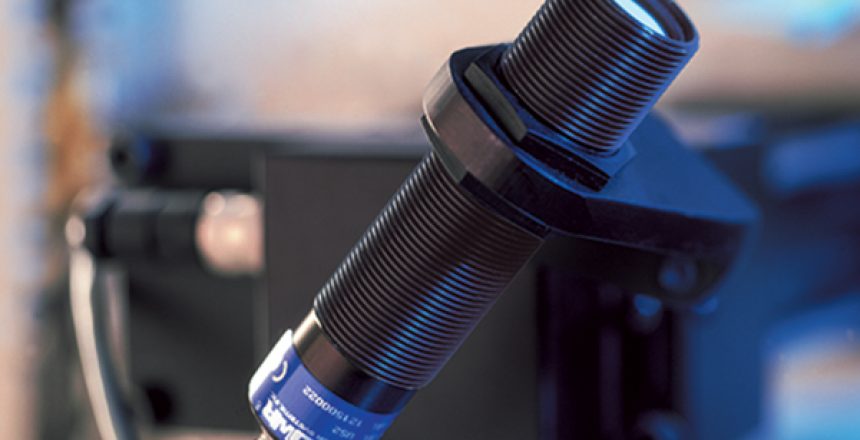
These sensors use sound waves to detect and measure distance or motion, and are commonly used in automotive, robotics, and industrial automation.
An ultrasonic sensor is a device that uses sound waves with frequencies higher than the human hearing range to measure distances, detect objects, or map environments. It emits high-frequency sound waves and measures the time it takes for the waves to bounce back after hitting an object. This information is then used to calculate the distance between the sensor and the object.
Ultrasonic sensors can offer high accuracy in measuring distances, often with millimeter-level precision. However, accuracy can be affected by factors such as temperature, humidity, and the reflective properties of the object being detected.
These sensors offer a reliable and versatile solution for distance measurement and object detection across various industries and applications.
Ultrasonic sensors working principle
The ultrasonic sensor consists of a transmitter and a receiver. The transmitter emits ultrasonic waves. The waves are typically in the range of 20 kHz to several tens of kHz. The ultrasonic waves travel through the air in a straight line from the transmitter. When the ultrasonic waves encounter an object in their path, they get reflected back towards the sensor. As it was said, the sensor also has a receiver that picks up the reflected waves. Then the sensor measures the time it takes for the waves to travel from the transmitter, hit the object, and return to the receiver. This time measurement is often referred to as the “time of flight.”

By knowing the speed of sound in the air (about 344 meters per second), the sensor can calculate the distance to the object using the time of flight. The formula used is:
distance = speed × (time / 2)
Note: In this formula the factor of “1/2” is used because the measured time includes both the forward and return journeys of the ultrasonic waves.
The calculated distance can be provided as an output signal, which can be in the form of a voltage, pulse, or digital value.
Factors affect the measurements of ultrasonic sensors
Several factors can influence the measurements of ultrasonic sensors. Here are some key factors to consider:
Temperature and Humidity
Ultrasonic sensors are sensitive to temperature and humidity variations in the environment. Changes in temperature can affect the speed of sound, which can lead to inaccuracies in distance measurements.
Temperature has a direct impact on the speed of sound. As the temperature increases, the speed of sound also increases, and vice versa. This relationship is due to the way sound waves propagate through a medium.
In general, as the temperature of a medium (such as air or water) increases, the molecules within the medium gain more kinetic energy and move faster. This increased molecular motion allows sound waves to travel faster through the medium.
For gases, such as air, the relationship between temperature and the speed of sound follows a linear relationship. The speed of sound in air at 20 degrees Celsius (68 degrees Fahrenheit) is approximately 344 meters per second (about 1,125 feet per second).

For every degree Celsius increase in temperature, the speed of sound in air increases by about 0.6 meters per second (2 feet per second).
Reflective Surface
The nature and reflectivity of the surface being detected can impact the accuracy of ultrasonic measurements. Smooth and hard surfaces tend to reflect sound waves better than soft or absorbent surfaces. Objects with uneven surfaces or those that absorb sound waves can cause weaker or scattered echoes, affecting distance measurements.
Sensor Orientation and Mounting
The position and orientation of the ultrasonic sensor can affect its measurements. Proper mounting is crucial to minimize interference from obstacles, reflections, or device vibrations that can lead to false readings or reduced accuracy.
Ambient Noise
High levels of ambient noise can interfere with the ultrasonic sensor’s ability to receive and interpret echoes accurately. Noise from machinery, other sensors, or even environmental factors like wind or flowing water can disrupt the sensor’s readings.

